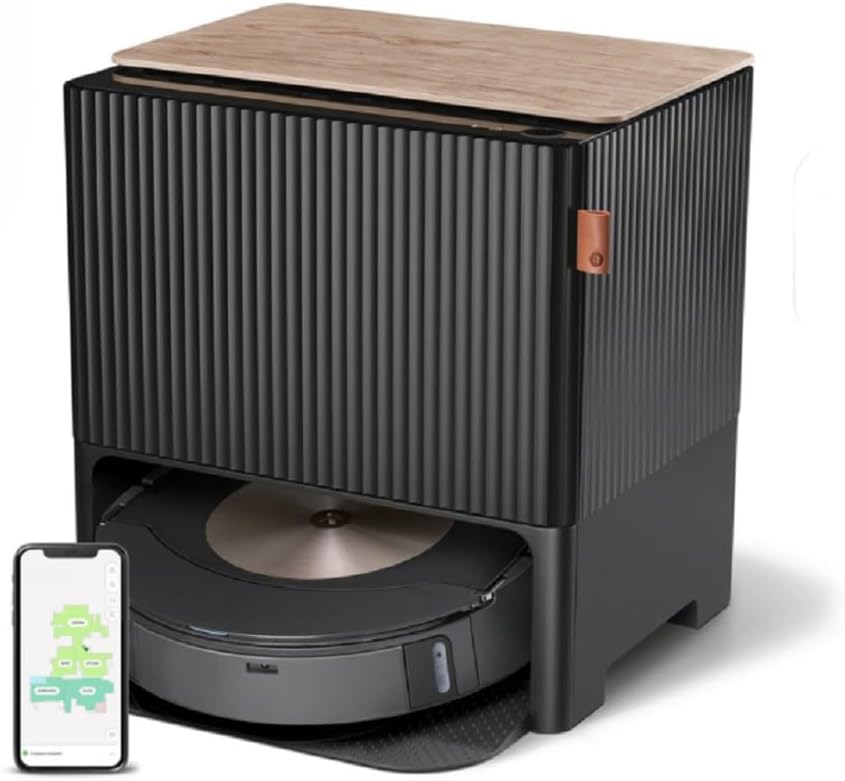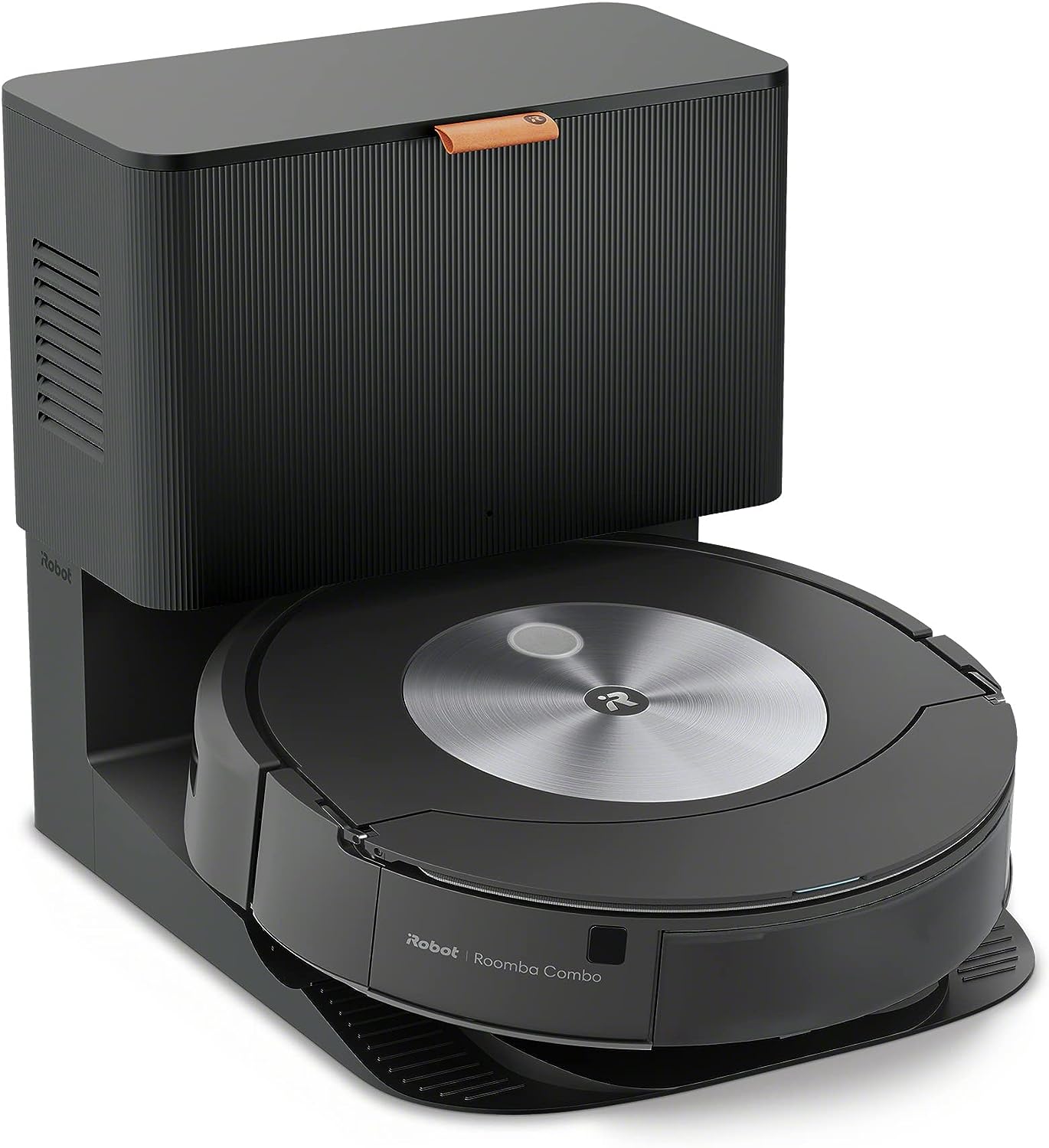We’ve all been there. You’re halfway through a chaotic morning, stepping over yesterday’s cereal, dodging dog hair, spotting a splash of juice on the kitchen tile—and you just think: Can’t something else handle this already? That’s where robot vacuums come in. And when we’re talking about vacuuming and mopping in one go, the Roomba Combo j9+ and j7+ are at the top of the pile.
But here’s the thing: they look similar, they sound similar, and unless you’ve had both gliding around your floors, it’s hard to tell what really makes one better. We’ve lived with both. Put them through sticky messes, tangled pet fur, mystery bathroom gunk, and everything in between. And yes, there are big differences—especially in how much thinking and self-managing the j9+ can do on its own.
Let’s dig into the real contrasts. Not just specs—but how they feel, behave, and solve your messiest daily problems.
The base is where everything changes
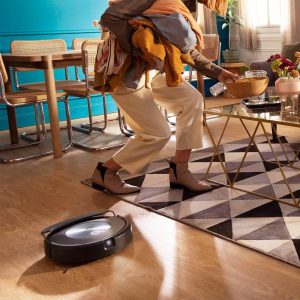
This is where the whole vibe shifts. Both robots are “Plus” models, meaning they come with those tall, tower-like bases that automatically empty their internal dustbins—which already feels like magic if you’ve been used to cleaning out tiny trays every day.
But here’s the twist: only the Combo j9+ goes the extra mile and refills its own water tank for mopping. The base doesn’t just suck out the dirt—it pours in clean water too. It basically acts like a water butler. You set it up once, and it can mop for weeks without you lifting a finger.
The j7+? You still have to refill its water manually. Not the end of the world, but once you’ve tasted full automation, going back feels clunky.
Both bases can store dry debris for around 60 days, which is wild. But the j9+ holds water for about 30 days, depending on usage. That means a full month without touching it. It changes your whole relationship with the vacuum—you stop thinking about it entirely.
Same power, different brains
Both claim the same suction—roughly 2000 Pascals, or 10 times the power of the old-school Roomba 600 series. And technically, yes, they deliver the same force.
But here’s where things diverge. The j9+ just feels smarter in how it uses that power. On lower settings, it still picks up more, especially on mixed surfaces. It adapts better to transitions between wood and rugs, and seems to sense when more suction is needed without maxing out every time.
They both ramp up automatically on carpets. But the j9+ does it quicker, smoother, and with more confidence. It’s not just muscle—it’s finesse.
Mopping that actually scrubs (finally)
This part was a game changer. Both models have retractable mop arms, so when they hit carpet, the mop lifts up. No soggy rugs, thank god.
But the j9+ adds SmartScrub, and it’s not a gimmick. It applies pressure and moves with a deliberate scrubbing motion, not just a soft drag like the j7+. Sticky juice spots, dried sauce blobs, even muddy paw prints—it actually removes them. The j7+ mops, sure, but it’s more like a damp swipe. It gets the job done if things are fresh, but anything slightly stubborn stays put.
Also, only the j9+ can use cleaning solution, thanks to the water refill system on the base. This adds a layer of sanitation the j7+ simply can’t offer.
And when they lift the mop over carpets? The j9+ goes higher and does it more precisely. If you’ve got high-pile rugs, that extra lift makes all the difference.
They both see well, but one anticipates
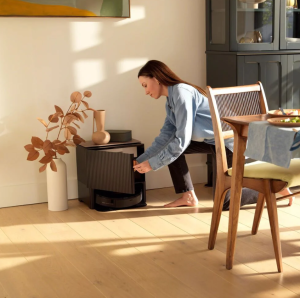
Both robots use PrecisionVision navigation, with front-facing cameras, LED lighting, and an AI brain that recognizes objects like cords, shoes, and pet messes. They build smart maps, let you label rooms, and avoid obstacles like a cautious toddler.
In this sense, the j7+ keeps pace. It’s no slouch. It even impressed us by steering around power strips and a pair of socks like it had seen them before.
But here’s the kicker: the j9+ recognizes more, and it remembers more. It even starts identifying certain spills—like bright liquids—and re-routes or mops them better. This isn’t life-changing, but it does suggest that the j9+ is thinking ahead. It learns your home, your habits, and your messes.
In homes with unpredictable chaos (kids, pets, guests), that extra awareness shows.
DirtDetective isn’t just a clever name
Both models have DirtDetect, which identifies dirt-heavy zones and hits them harder. Useful, sure.
But the j9+ goes full Sherlock Holmes with a feature called DirtDetective. It remembers where the dirt usually is and starts prioritizing those rooms before you even ask. Over time, it builds a memory of which areas need the most love—and sequences its cleaning plan accordingly.
It even finishes with bathrooms, to prevent spreading grime from those surfaces into the rest of the house. Smart? Yes. Grossly satisfying? Also yes.
Even more: it chooses whether to vacuum, mop, or do both depending on the room type, previous dirt levels, and floor material. That’s not just intelligence—it’s autonomy.
Hardware that’s quietly the same
Not everything is different. Both use dual multi-surface rubber brushes, which spin in opposite directions to lift debris and avoid tangling. We tested them with hair from a long-haired dog, and neither one choked or clogged.
Battery life? Also identical. Expect 90 to 120 minutes depending on surface and settings. And if they run out mid-clean, they return, charge up, and resume right where they left off. No wandering, no forgetting.
For homes over 150 square meters, this recharge-and-resume makes a huge difference.
Apps and assistants: a draw
No surprises here. Both models connect to the same iRobot app, and it’s great. You can name rooms, set schedules, draw no-go zones, or even label specific furniture.
Voice commands via Alexa or Google Assistant work exactly the same on both. Want it to clean the kitchen while your hands are full? Just ask.
And notifications, software updates, maintenance reminders—it’s all baked into both models. So from a control perspective, they’re equals.
Size and shape: subtle but real
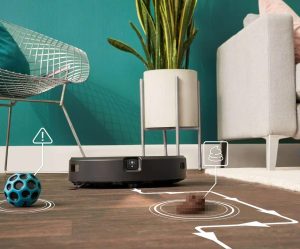
On a technical sheet, these two don’t look much different. The j9+ is a centimeter wider and about 600 grams heavier, coming in at around 4 kg total. Not much on paper, but it feels heavier when you pick it up.
Height? Same. At 8.7 cm tall, both can duck under most beds and furniture without issues.
What changes more dramatically is the base station. The j9+’s base is wider and takes up more space, thanks to its water refill tank. If you’ve got limited storage space or plan to hide it behind furniture, that bulk might matter. But if you can spare the room, what it gives in return—true autonomy—is worth it.
Build quality and the little things
Side by side, they both look premium. Matte finishes, clean lines, and that signature circular Roomba silhouette. But if you spend a few weeks with both, the j9+ shows its refinement.
It docks more accurately on the first try. It transitions between floor types more smoothly. It feels a bit more balanced in motion. These aren’t deal-breaking differences, but they’re quality-of-life touches you start to appreciate over time.
And the winner is…
Honestly? The Roomba Combo j9+ doesn’t just win—it takes the category up a level.
It cleans smarter, scrubs harder, thinks more, and asks less of you. It knows what needs cleaning, when, how hard, and with what intensity. It refills itself. It empties itself. It chooses its own path. You don’t manage it—you just let it do its job.
Yes, the j7+ is still a top-tier robot. If you want great navigation and solid performance without caring about deep mopping or self-refilling, it’s a reliable choice. But once you’ve seen what the j9+ can do, the j7+ feels like yesterday’s tech.
We didn’t expect to care this much about mop elevation or DirtDetective logic, but here we are. The Roomba Combo j9+ changed how we clean. Or more accurately… it cleaned without us even thinking about it.
And isn’t that kind of the dream?

